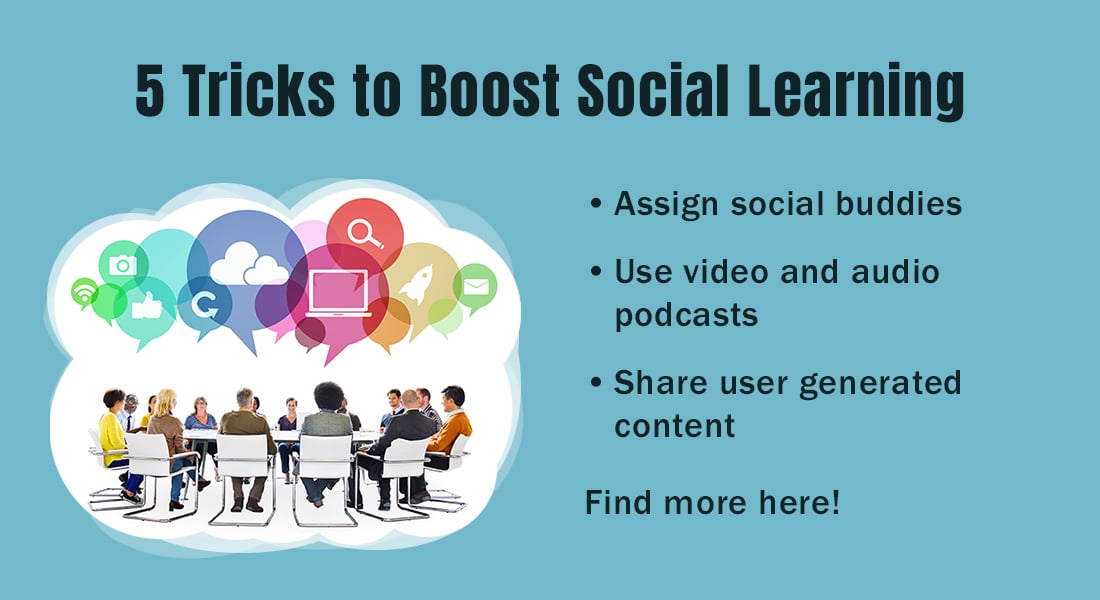How Online Learning Can Effectively Help the Insurance Industry

For training managers from the insurance industry, you know training is a big component to run the business successfully. The industry is constantly changing and organizations spend a lot of time trying to keep up with the change. Right from selling different products to learning how to deal with consumers/customers, risk management, regulations and processes to follow, they need to be taught effectively. Not to forget, when employees (experienced) retire, the management is under immense pressure to train the new bunch as quickly and effectively as possible.
The most efficient way of imparting training to employees of the insurance industry is through e-learning. The benefits that e-learning offers over other training delivery methodologies makes it an ideal choice for the industry and the learners (employees) in it. Let’s see how employees (learners) of the insurance industry can benefit from online learning.
1. Multi-device Learning for the Modern Workforce
The biggest advantage of e-learning to the insurance industry is probably the ability to learn anytime anywhere on any device. Insurance companies make most of their revenue by selling products, and therefore employ a huge workforce to sell and service these complex financial products across the country and abroad. With employees spread across different branches and locations, with a few working in remote areas, access to training content on these products can prove to be quite difficult. This problem can be resolved through the use of multi-device access and leveraging its offline capability when employees wish to access training.
The modern workforce uses multiple devices for digesting information. It prefers gaining accessing learning content across all these devices. Thanks to the authoring tools available today, e-learning can be published in such a way that it can be accessed across devices. This is called responsive learning. You create a single e-learning course for the desktop, responsive design will make sure that the course layout and content adjusts itself to the screen dimensions, to deliver a rich and interactive experiences on all device types.
2. Just-in-Time Delivery to Improve Productivity
The insurance industry faces huge challenges with a large number of products going to the market. Firstly, they need to train the employees i.e., the salespeople on the product features and then reinforce the learning when they go to face customers in the real world.
With this regard, an e-learning course alone cannot do the job. In order to make sure that the sales reps remember the learning and apply it well, the product knowledge and the related information needs to be delivered in such a way that it can be accessed at the moment of need. That’s called just in time (JIT) delivery, which is the crux of making a successful sales pitch.
Many employees in the BFSI sector already have access to hand-held devices such as smartphones and tablets in their course of work. Short interactive videos, interactive PDFs, infographics, eBooks all can be sent to the employee’s mobile devices or they could be hosted on the learning management system (LMS) for easy access.
3. Microlearning for Easy and Engaging Learning
No learner likes to take an hour-long e-learning course, and it’s no different for learners of the BFSI sector. Besides, traditional e-learning courses clock around 30-60 minutes (consisting of graphics, images or videos) making it difficult to load on mobile devices. Take compliance training courses, for example, the insurance sector is one of the most heavily regulated industries. Organizations at times face serious consequences if they violate the applicable norms and regulations. Therefore, training staff members on relevant compliance rules and standards effectively becomes crucial. A strict no-no in this case would be a 60-minute e-learning course which would definitely make learning disengaging (although the training is crucial).
To make learning of such content accessible and to improve knowledge retention, microlearning comes in handy. The short, bite-sized duration of the microlearning courses ensure that the message is conveyed in as little time as possible. And because the content is divided into digestible nuggets and provides one learning point at a time, learners will be able to retain the information for a longer time.
4. 24X7 Access to Materials Through LMS
The insurance companies – with the sheer number of affiliates and subsidiaries they operates with – often find it logistically challenging to make the valuable training content available to its employees spread across the world. This problem could be solved by employing a learning management system (LMS) which offers your employees a centralized platform where they can access training materials 24X7. An LMS is a software application that allows organizations to administer, deliver and publish online learning courses. Employees simply login to the LMS through a browser, and gain access to all the training materials you make available to them.
Most LMSs today are mobile-friendly. Short videos and interactive PDFs can be used as materials for performance support which will be handy for a quick brush-up. As I mentioned earlier, the insurance sector churns out financial products on a regular basis. If there is a new product out in the market and the information needs to be conveyed to the employees who are working in the field, the insurance companies can easily to push the relevant information – in the form of a short video or a PDF – through the LMS and the employees will be notified.
5. Easily Translate Materials to Reach Global Employees
Multinational insurance organizations host a staggering number of business segments all across the world. With their affiliates and subsidiaries scattered all over the world, and you have a huge translation challenge. However, if companies go for e-learning they can immensely benefit from translating the course from English or any single language e-learning course into multiple languages. E-learning vendors use various authoring tools to perform the translation in a quick fashion, so it saves your valuable time too.
Like any other service-based industry, the success of companies in the insurance sector relies heavily on the competency of their employees. Training plays a key role in enhancing the skills of people in this sector. Imparting skills to employees or upgrading them through traditional methods is both time consuming and expensive. E-learning, on the other hand, transfers knowledge in a much engaging way. The content is available 24X7 and can be accessed anytime anywhere, which is a crucial advantage when used in the insurance industry.





